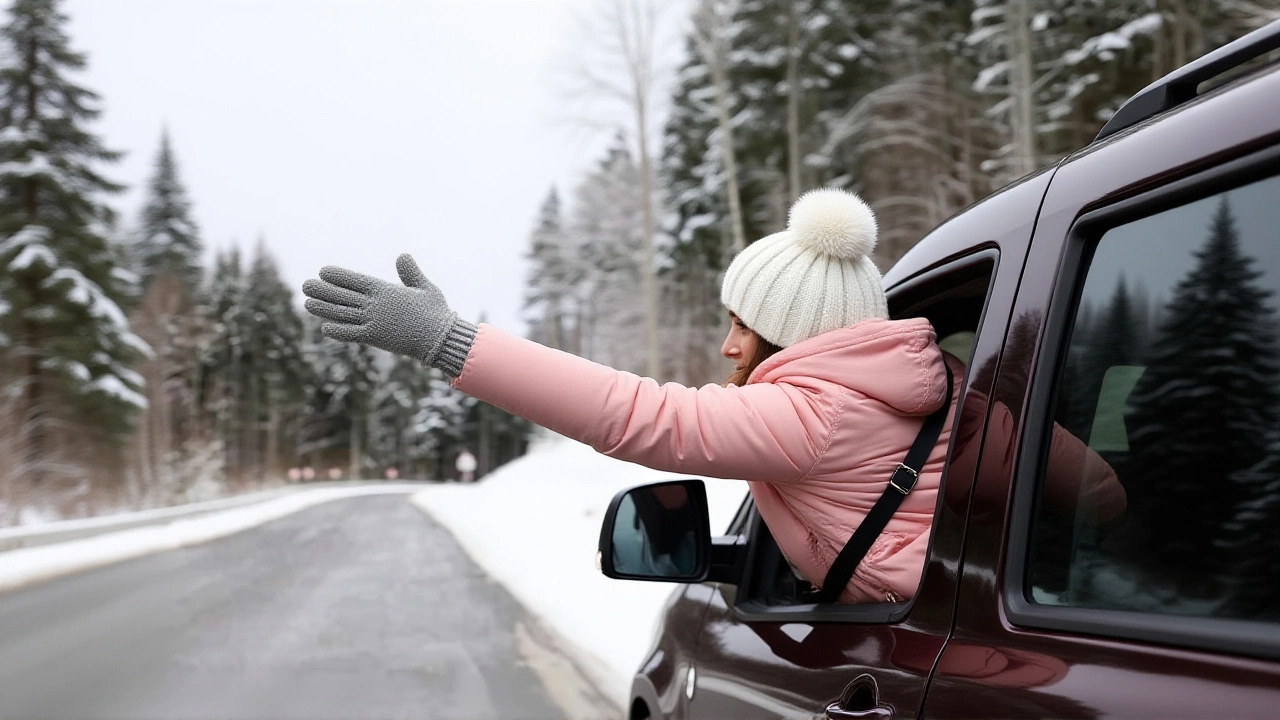As millions of Americans prepare for Thanksgiving, a powerful and unpredictable cold snap tied to the National Weather Service’s forecast of a shifting polar vortex could turn holiday trips into hazardous journeys. From Seattle to Dallas and across the Chicago metro area, temperatures are expected to plunge during the Thanksgiving week of November 24-28, 2025, with icy roads, sudden snow squalls, and wind chills dipping below zero in some regions. The National Weather Service warns this isn’t just a cold front—it’s a destabilized Arctic air mass, amplified by La Niña and possibly triggered by a rare Sudden Stratospheric Warming (SSW) event. And with nearly 82 million Americans planning road trips and the Transportation Security Administration bracing for 17.8 million air travelers, the stakes couldn’t be higher.
What’s Really Going On With the Polar Vortex?
Here’s the thing: the polar vortex isn’t some mythical beast. It’s a massive, spinning pool of frigid air that normally hovers over the North Pole, held in place by the jet stream. But when it weakens—often due to stratospheric disruptions like SSW—its edges unravel. And right now, meteorologists from wt360 and H24 Weather News say the vortex is unusually fragile. A weak vortex doesn’t mean less cold—it means the cold has nowhere to stay. It spills south. And this year, it’s spilling right over the heart of the U.S. during peak travel season.
What makes this different from last year’s cold snap? Timing. SSW events typically happen in January. But this one’s brewing in late November—an anomaly that could set off a chain reaction. "A weak polar vortex doesn’t guarantee U.S. impacts," says Dr. Lena Ruiz, a senior climatologist with wt360. "It could just as easily shift into Europe or Asia. But the models are leaning hard toward a major intrusion here, especially late November into early December. We’re seeing the ingredients: low stratospheric pressure, record sea ice loss in the Barents Sea, and a neutral-to-weak La Niña pattern. All three are working together to destabilize the system."
Where the Worst Weather Will Hit
The National Weather Service has flagged three hot zones for extreme conditions:
- Central Rockies (November 29–December 1): Moderate risk of significant snowfall, especially in Colorado’s mountain passes and I-70 corridor.
- Great Lakes Interior (November 29–30): Lake-effect snow bands could dump 12–24 inches in places like Buffalo, Syracuse, and Marquette—right when holiday travelers are heading through.
- Northern Plains and Upper Midwest (November 26–30): Freezing rain, black ice, and wind chills below -20°F in North Dakota, Minnesota, and Wisconsin.
Even places like Kansas City and St. Louis could see their first snow of the season during the holiday weekend. And don’t be fooled by the sun—temperatures in Denver may hit 40°F on Thanksgiving Day, but drop to 10°F by Friday night. That’s a 30-degree plunge in under 24 hours.
Travelers Are Already Feeling the Pressure
The AAA reports that 82 million Americans will drive this Thanksgiving—the highest number since 2019. Meanwhile, Transportation Security Administration officials are preparing for 3 million air travelers on Sunday, December 1 alone. Airports from O’Hare to Denver International are already adding de-icing crews and staffing up for delays. But the real danger isn’t just cancellations—it’s the hidden hazards.
"We’ve seen travelers get stranded on I-90 in South Dakota because they didn’t pack chains," says Randy Hines, a veteran state trooper in Rapid City. "Some folks think, ‘It’s Thanksgiving—I’ll just power through.’ But when visibility drops to zero and the road turns to glass, you don’t get a second chance."
What This Means for Your Wallet—and Your Home
It’s not just about travel. The cold snap is already reshaping consumer behavior. According to retail analytics firm DataTrack Insights, sales of snow shovels are up 42%, space heaters 37%, and window insulation kits 34% compared to last year. Meanwhile, cold beverage sales are dropping 7% as Americans stock up on hot tea, cocoa, and soup. Utility companies are bracing for demand spikes: Midwest Energy expects a 28% surge in natural gas usage between November 27 and December 5.
"We’re not just talking about comfort," says Dr. Marcus Chen, an energy economist at Columbia University. "This kind of cold can strain the grid. If we get a prolonged freeze in the Plains, we could see rolling blackouts. And elderly residents in rural areas—those without reliable heating—are at real risk."
What’s Next? The Real Winter May Just Be Starting
The Thanksgiving cold is just the appetizer. H24 Weather News forecasts a second, more intense polar vortex plunge in late December 2025, potentially affecting the entire eastern half of the country. The National Weather Service Climate Prediction Center says colder-than-average conditions could linger into mid-December across the northern tier—and even parts of the Midwest may not see a true thaw until January.
And here’s the twist: while the polar vortex is weak this year, that doesn’t mean winter will be mild. In fact, the opposite. Historical data shows that when the vortex is unstable, we get more extreme swings—colder snaps, heavier snowfalls, longer cold spells. The 2021 Texas freeze? That was a weak vortex. The 2014 "polar vortex" that shut down Chicago? Also a weak vortex. It’s not the strength of the vortex—it’s how it breaks.
Background: Why This Matters Beyond the Holidays
Since 2022, the U.S. has seen an average of 72% of its land in dry or drought conditions. As of November 18, 2025, that number is 69%—a slight improvement, but still far above the 52% historical average. That means less snowpack in the Rockies, which means less water for agriculture and cities come spring. A strong winter snowfall could help, but only if it comes in steady, not in chaotic bursts. And with the jet stream wobbling more than ever, we’re getting neither.
What’s happening now isn’t just weather. It’s climate in motion. The Arctic is warming three times faster than the rest of the planet. That’s weakening the temperature gradient that keeps the polar vortex locked in place. The result? More frequent, more unpredictable cold outbreaks—even as global temperatures rise.
Frequently Asked Questions
How will this affect my Thanksgiving travel plans?
If you’re driving through the Central Rockies, Great Lakes, or Northern Plains, expect delays, road closures, and icy conditions between November 26 and December 1. Check real-time road conditions via state DOT websites, pack an emergency kit with blankets, water, and non-perishable food, and avoid travel during peak snowfall hours. Airlines are already warning of possible cancellations—especially from Chicago, Denver, and Minneapolis. Consider flying early or delaying your return.
Is this winter going to be worse than last year?
It’s likely to be more volatile. Last winter was relatively mild in the East but brutal in the West. This year, models suggest a stronger contrast: deep cold in the Midwest and Northeast, with heavier snow in the Rockies and Great Lakes. The polar vortex is more unstable, and with La Niña lingering, we’re seeing a classic pattern for extreme winter weather. Don’t assume this will be a repeat of 2024.
Why is the polar vortex weakening, and is climate change to blame?
Yes—climate change is a key factor. As the Arctic warms faster than the rest of the planet, the temperature difference between the pole and mid-latitudes shrinks. This weakens the jet stream, making it wavier and more prone to letting Arctic air spill south. Sudden Stratospheric Warming events, once rare, are becoming more frequent. Scientists at NOAA confirm this trend: unstable polar vortices are now 40% more likely in November than they were in the 1990s.
What should I do to protect my home from the cold?
Seal windows and doors with insulation kits, which sales have surged 34% this month. Check your furnace filter—clogged filters cause breakdowns during cold snaps. If you have pipes in unheated spaces, let a trickle of water run overnight. And consider signing up for utility assistance programs—many states are expanding aid for low-income households as heating costs rise. Don’t wait until your pipes freeze.
Will this cold snap help with the drought?
It could—but only if the snow accumulates steadily and melts slowly. A single heavy snowstorm won’t fix the drought. What matters is snowpack in the Rockies, which feeds the Colorado River and other major waterways. If the snow comes as rain or melts too quickly due to warm spells, it won’t help. The current drought affects 69% of the U.S., well above the 52% average. We need consistent, long-term snowfall, not just a Thanksgiving blizzard.
What’s the chance of another big cold snap in December?
High. wt360 and the National Weather Service both point to a second major polar vortex intrusion expected in late December 2025. This one could bring prolonged sub-zero temperatures to the Midwest and Northeast, with snowstorms likely in the Great Lakes. Prepare now—don’t wait until it’s too late.



